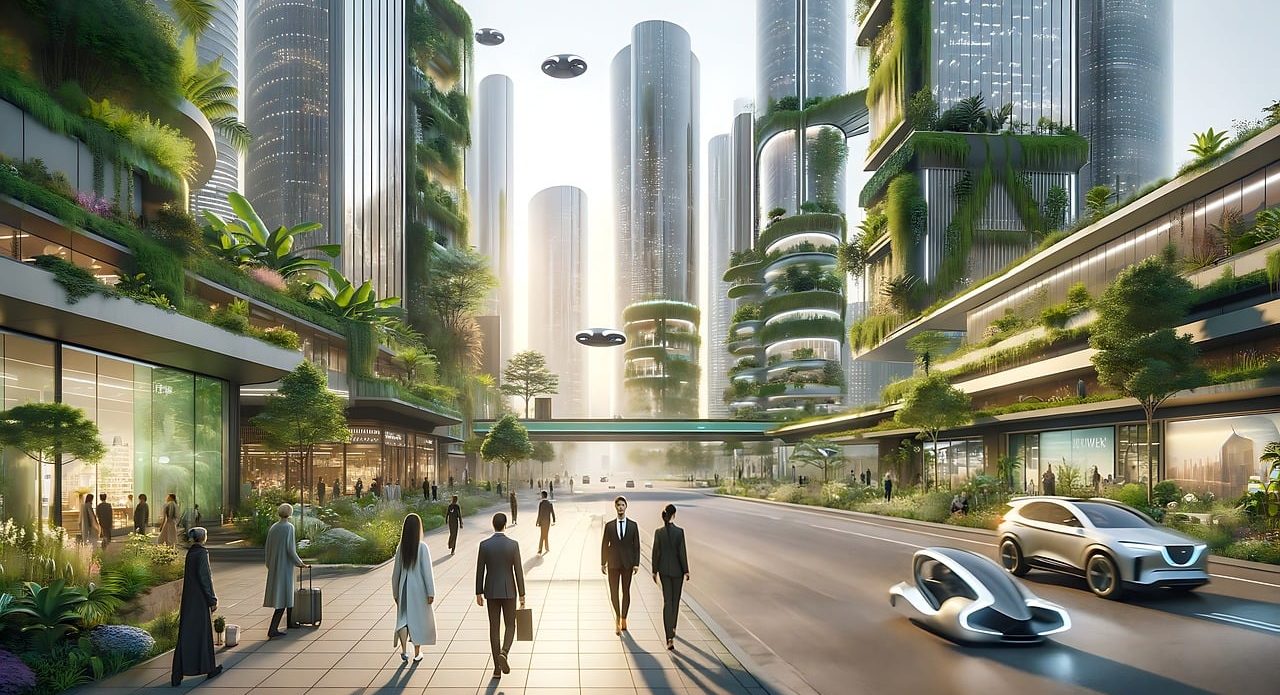
A city is sustainable when it is nourished by numerous gardens, parks and green spaces; when it offers conditions to reduce polluting emissions and when it aims to protect nature and not waste natural resources, for example.
Sustainable cities are those cities in which social well-being and economic progress are pursued and sought without putting natural resources in check and trying to cause the least possible impact on the environment.
In these sustainable urban environments, the aim is to ensure the rights of citizens without causing harm to nature.
Sustainable development and urban resilience are part of the bases of this territorial planning model that aspires to achieve a harmonious balance between the protection of the natural environment , social inclusion and economic development .
Key elements and criteria to achieve sustainable cities
To achieve sustainable cities there are elements, components and criteria that are key in the planning, design and execution stages of measures and works.
It is necessary, for example, to know the benefits of the so-called blue and green infrastructure and implement its guidelines. Betting on renewable energy and aspiring to energy efficiency , as well as establishing conditions that contribute to social equity , are other principles to consider.
In sustainable cities , in addition, relevance is given to green spaces , the circular economy and efficient waste management .
Directing efforts towards the mitigation or reduction of polluting gas emissions through policies and technological tools is also essential for a city to be sustainable .

Agroecological practices framed in urban agriculture contribute to consolidating the sustainable city model.
Challenges and solutions
Those nations willing to generate sustainable cities know that it is a plan full of benefits but that it is not easy to put into practice. This type of ambitious project that involves a profound urban transformation involves designing and organizing territories in which there are many problems to be solved and challenges to be overcome.
Demographic growth , continuous urban expansion , environmental pollution , obsolete infrastructure , social inequality and the advance of climate change , for example, force us to look for the most convenient solutions possible, but it requires simultaneous and interdisciplinary work. Without a doubt, it is a complex mission that demands time, will, responsibility, investment and creativity, but if the political decision is firm, it is not impossible to meet the objectives of adopting sustainable urban models .
It is essential, to significantly improve both the quality of life of citizens and the environmental reality, to make optimal management of resources ; educate and raise awareness among people about the importance of not wasting or wasting water ; and encourage citizen participation in order to get individuals involved in debates related to mobility , housing , education and the environment .
It is interesting to know that sustainability is one of the pillars of smart cities . They are reached through innovation and the use of technology to respond to everyday problems related to urban dynamics and public services , for example. According to those who promote the smart-cities model, by investing in technological tools it is possible, among other achievements, to organize and control traffic in large cities , install efficient and eco-friendly lighting systems and carry out intelligent waste management in order to save. resources and time based on containers and collection trucks equipped with GPS.

In a smart city there is sustainability at an environmental level, intelligent treatment of solid waste and use of information and communication technologies for the benefit of organization, safety and quality of life within the urban environment.
Benefits of living in sustainable cities
The positive points that emerge from a sustainable city are multiple and varied. There are benefits in ecological matters, at an economic level, in terms of health and even in terms of the landscape .
Public health is favored when green infrastructure is given the value it deserves. The abundance of outdoor recreational areas rich in vegetation , urban trees , vertical gardens and public spaces adorned with natural flowers and shrubs are necessary to conserve biodiversity and contribute to the mitigation of climate change . With this scenario, water security is gained, stress levels are generally reduced and in parallel the feeling of well-being grows, the majority of people achieve a higher degree of attention or concentration and air quality shows great progress .
By having less pollution thanks to sustainable transportation and by using natural resources more efficiently, to add details, nature is kept safe and the population as a whole lives better.
Ecosystems , in this framework, are strengthened and communities are demonstrating resilience by adapting and overcoming difficulties or phenomena that take away their comfort or represent a threat to their lifestyle.
Daily expenses are reduced, in the same way, when cycle paths , pedestrian areas or bicycle paths are available to move around urban areas safely using non-polluting means of transport . The philosophy of recycling and reusing products also helps save and leads to a reduction in waste .
